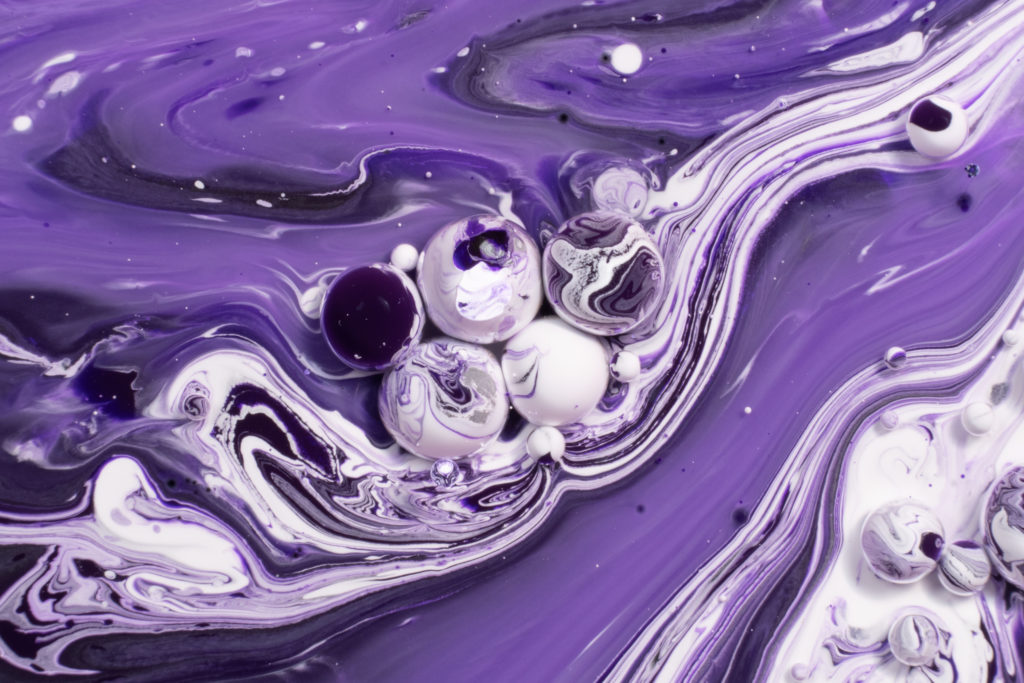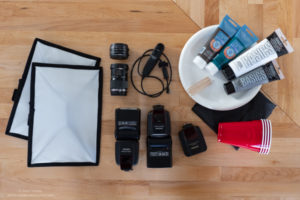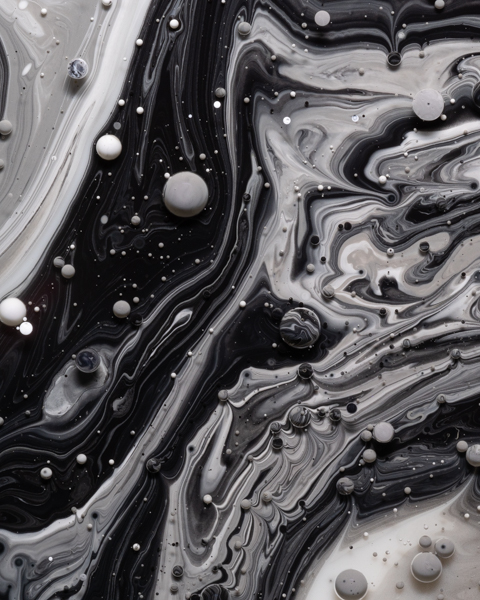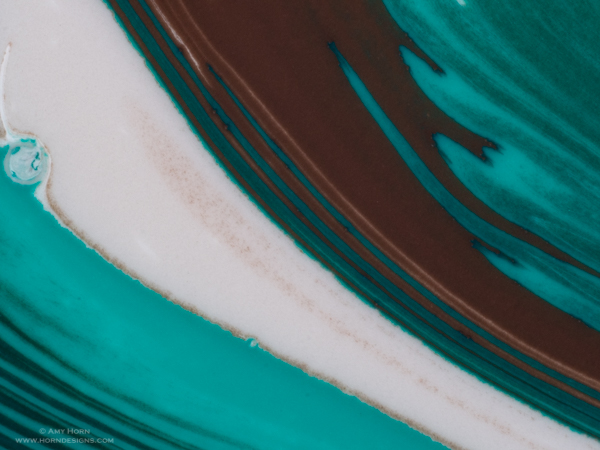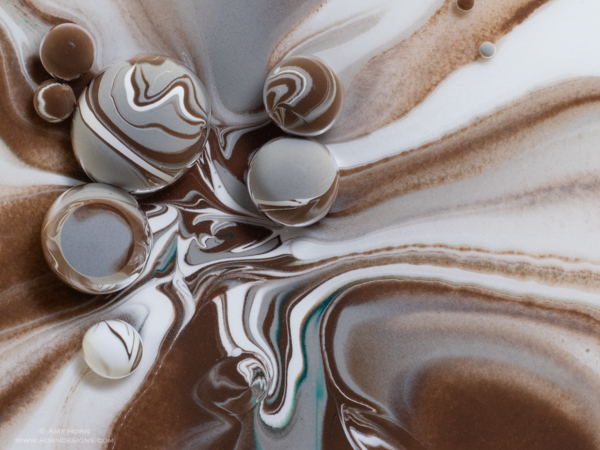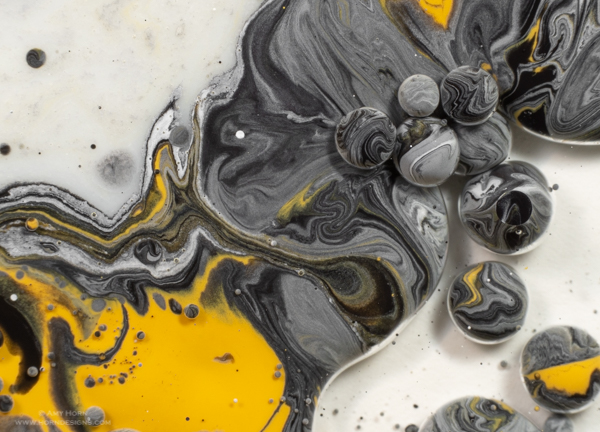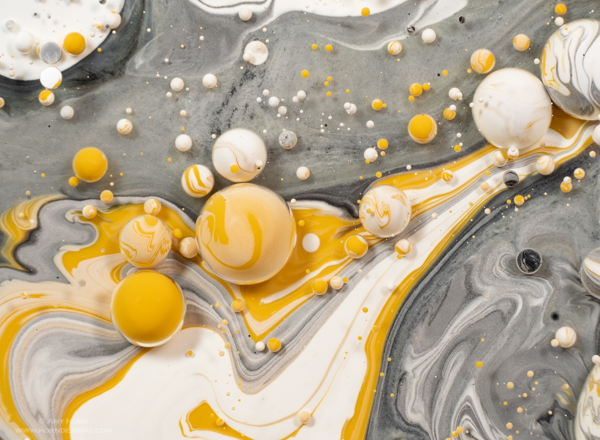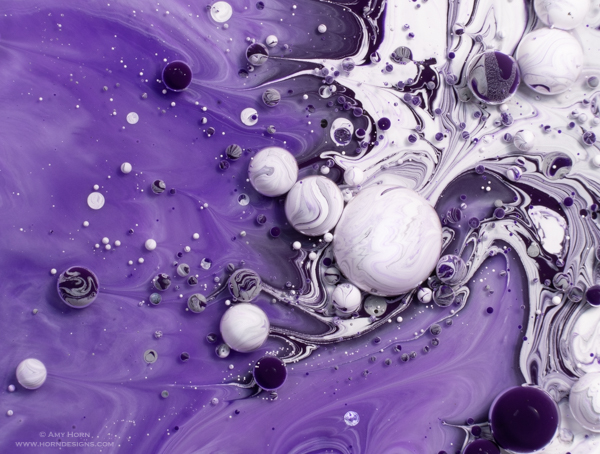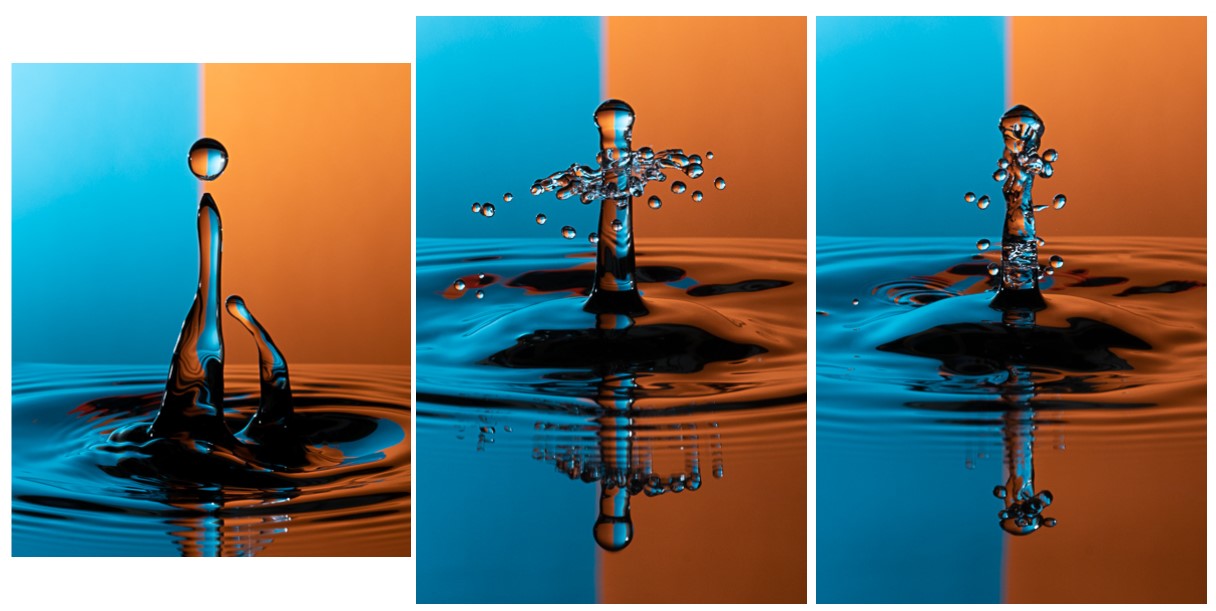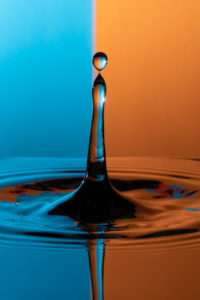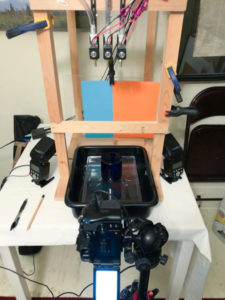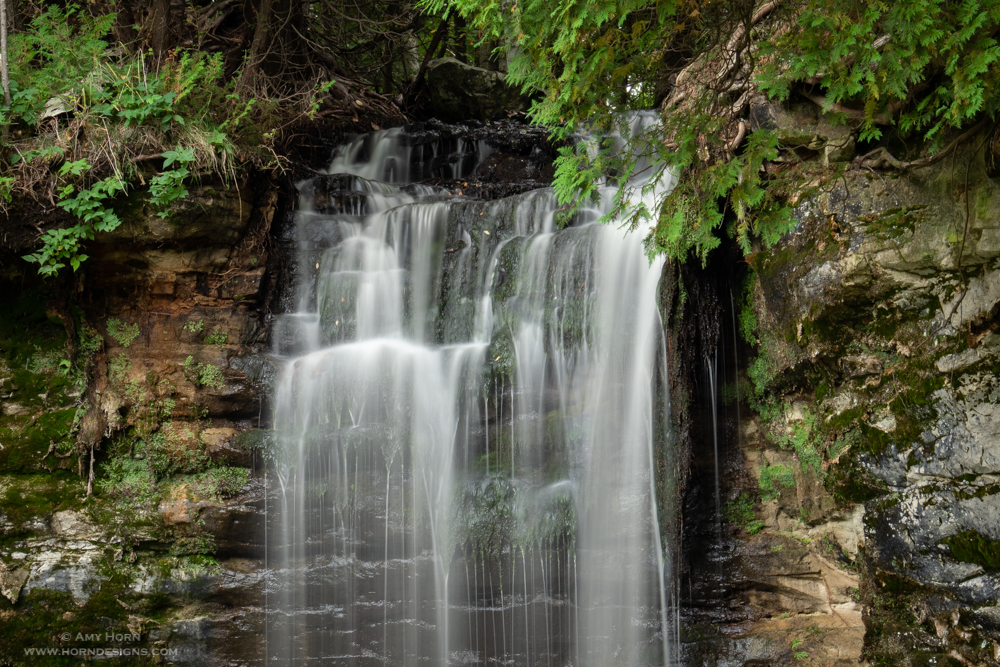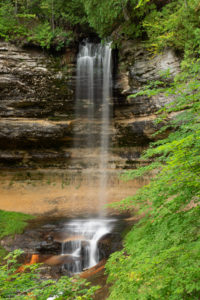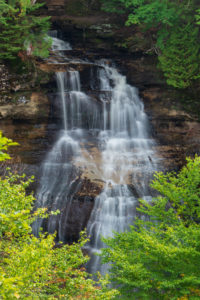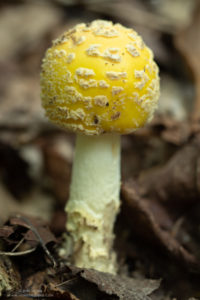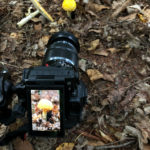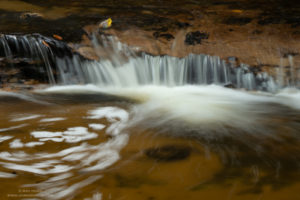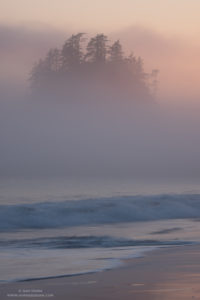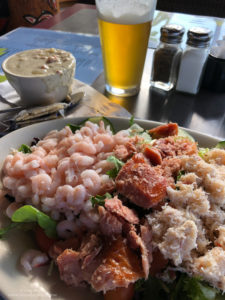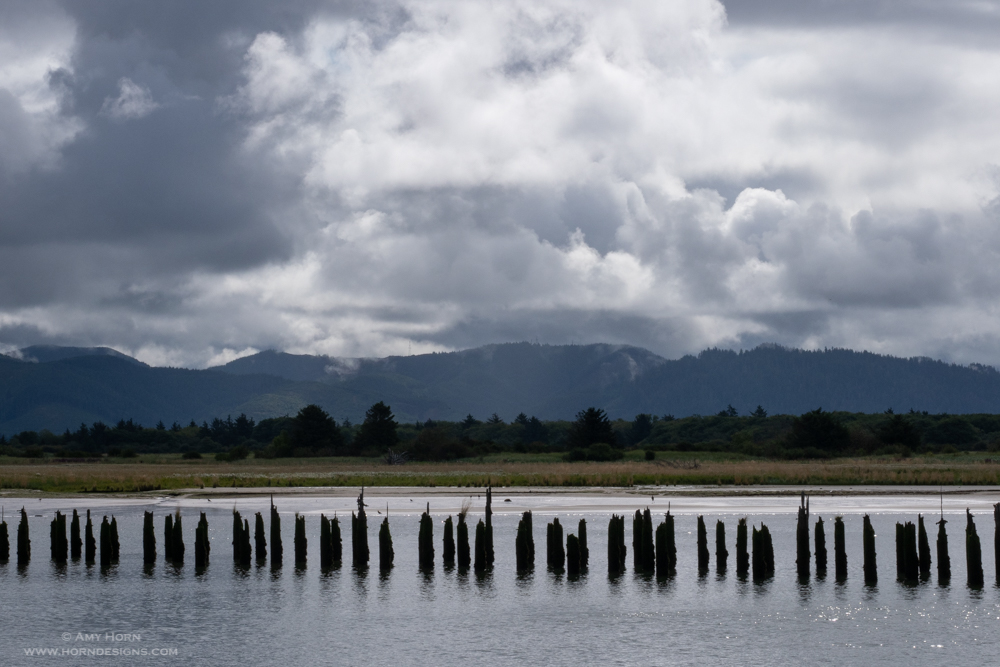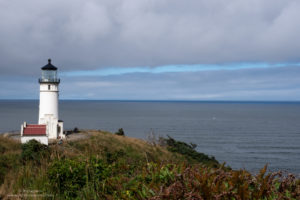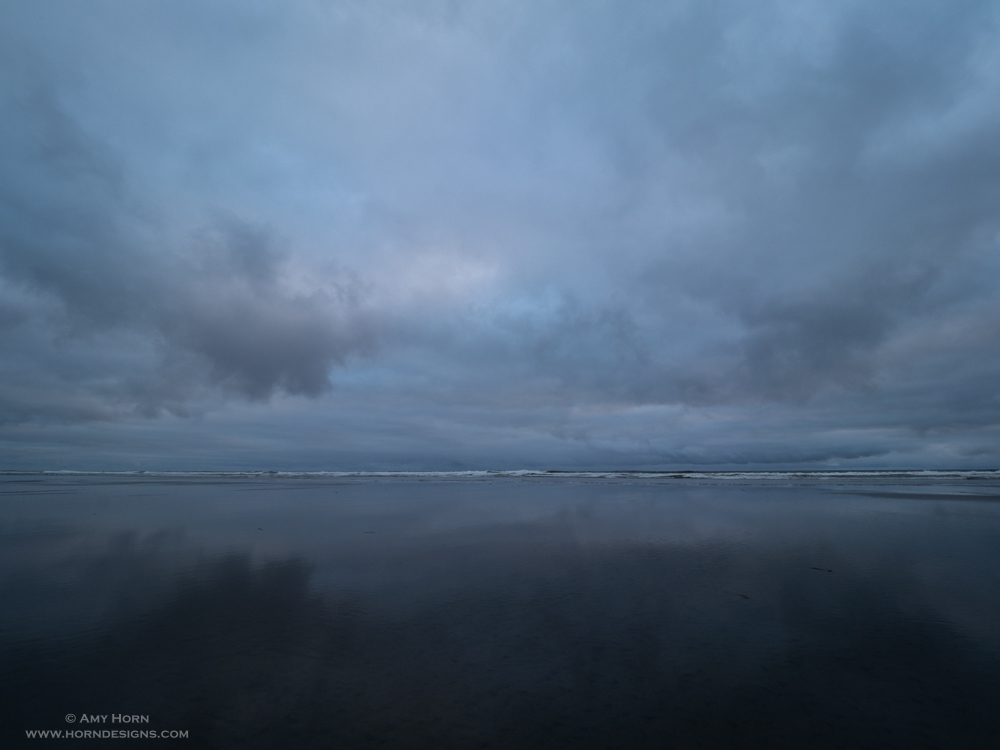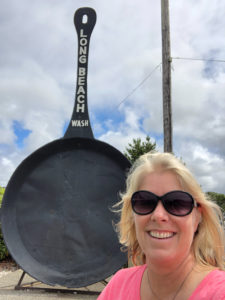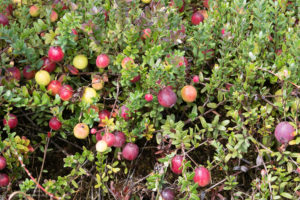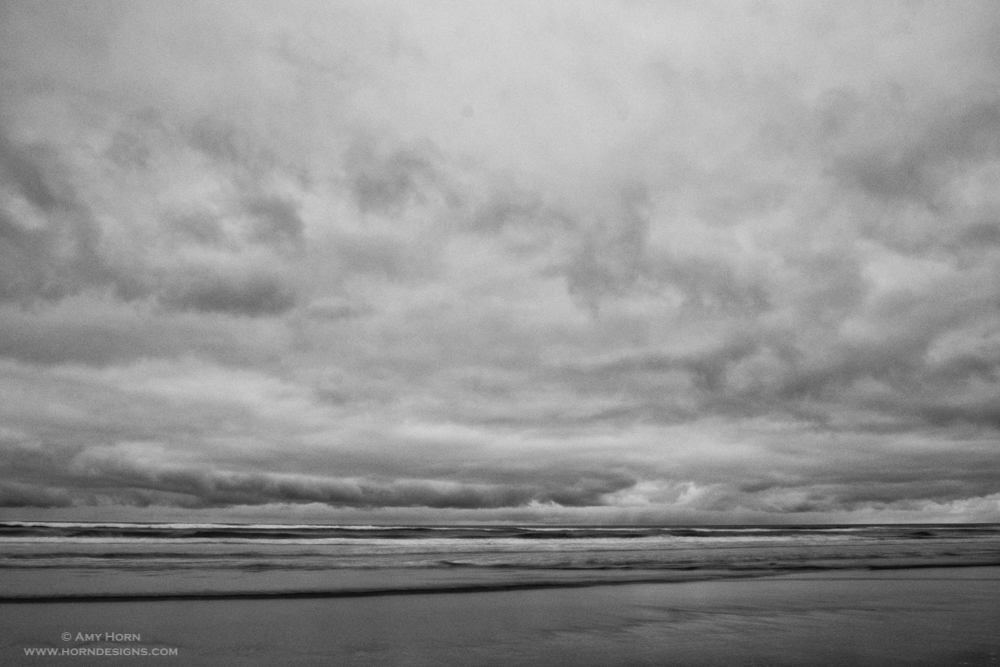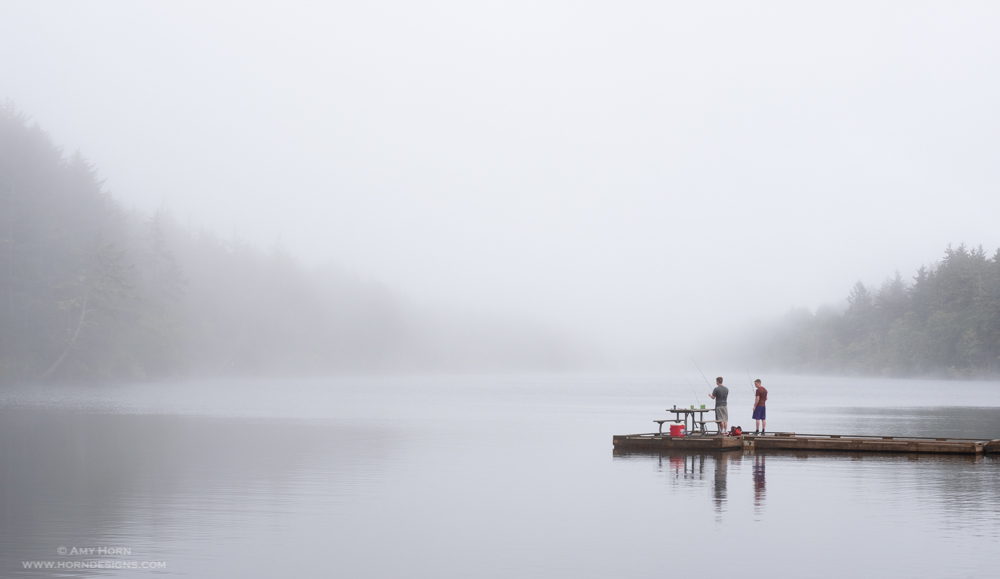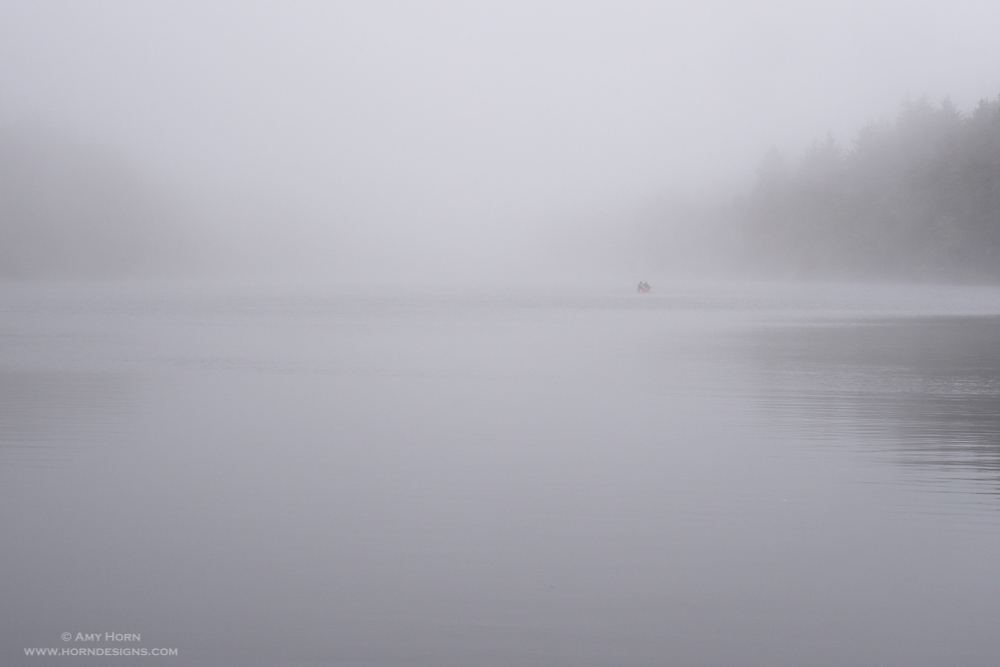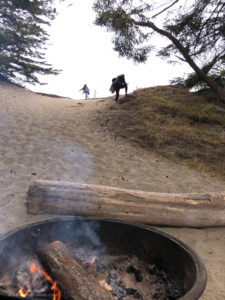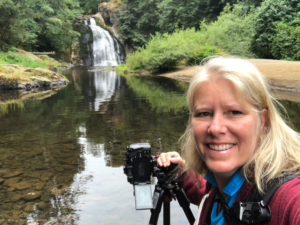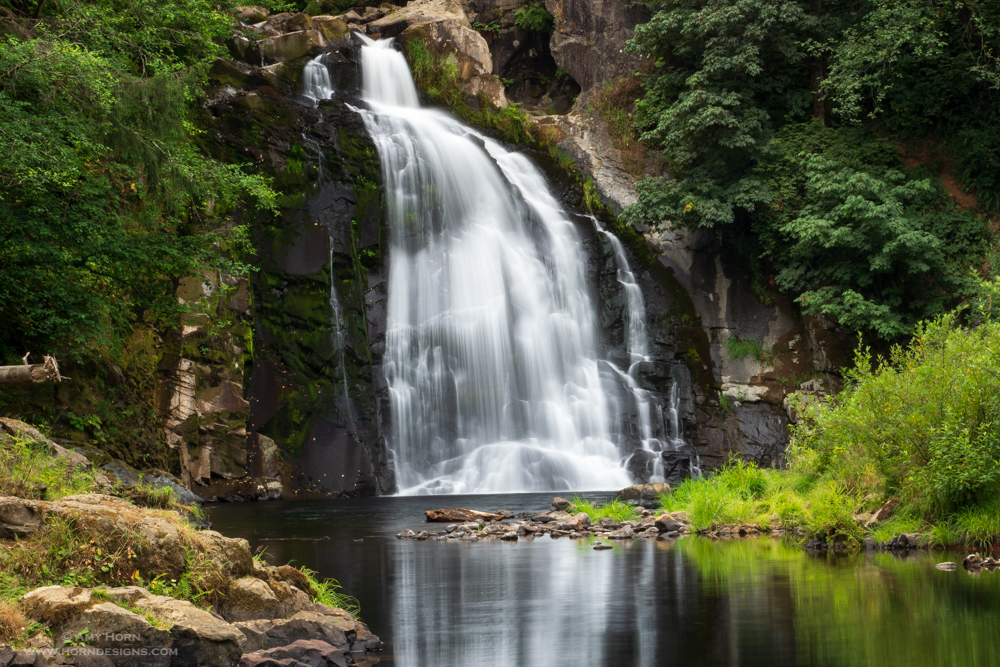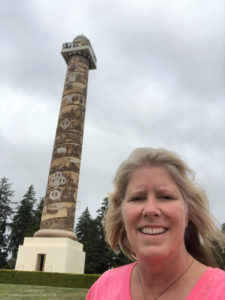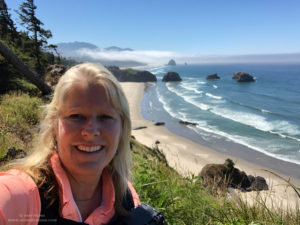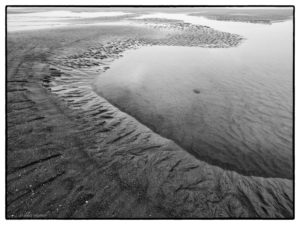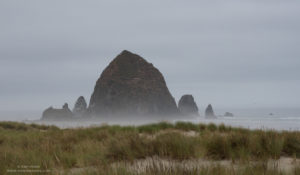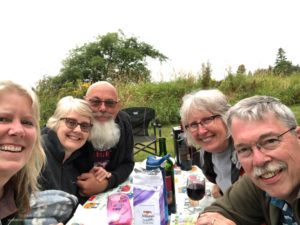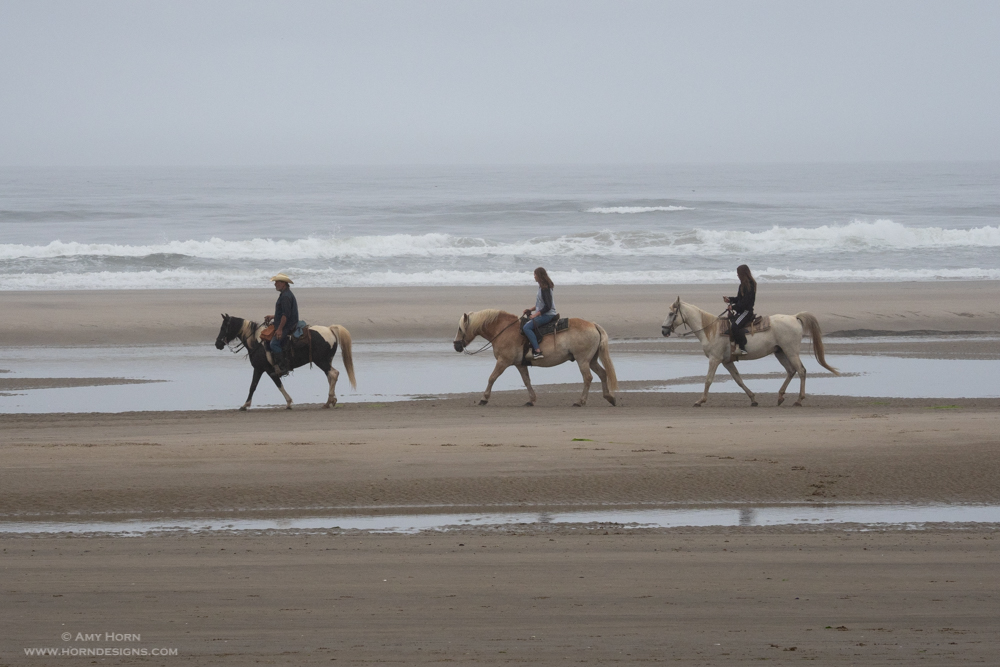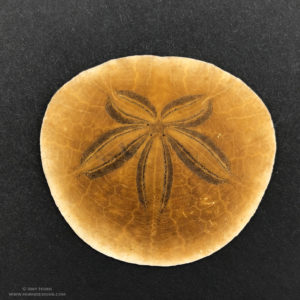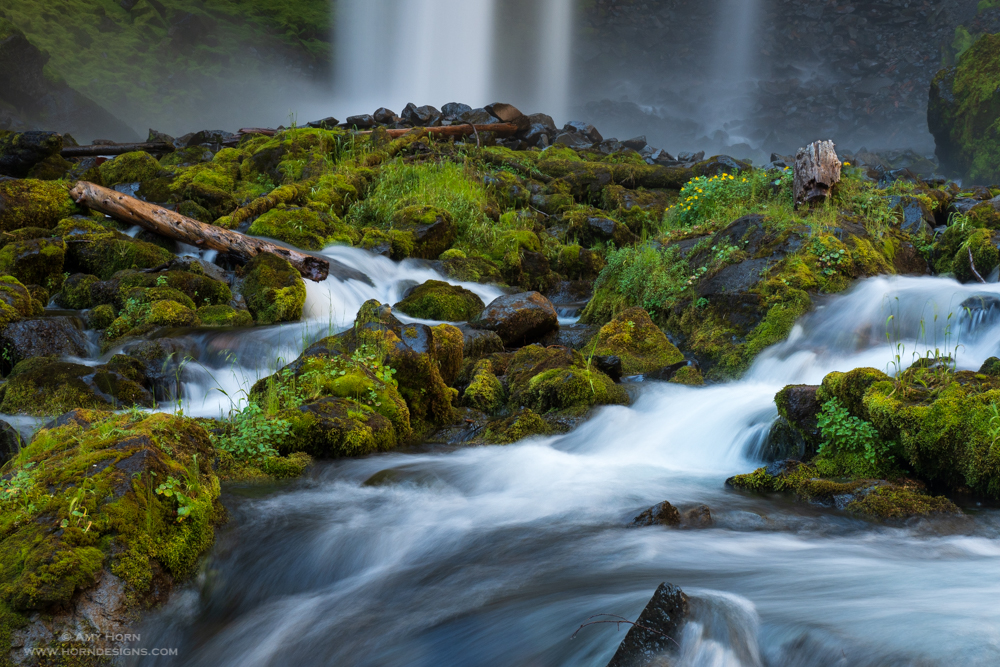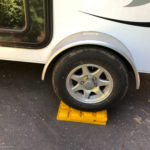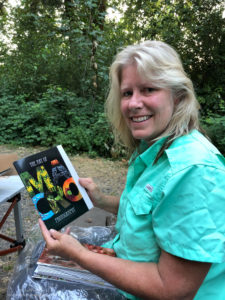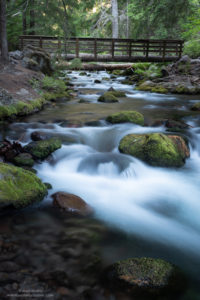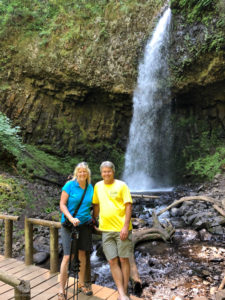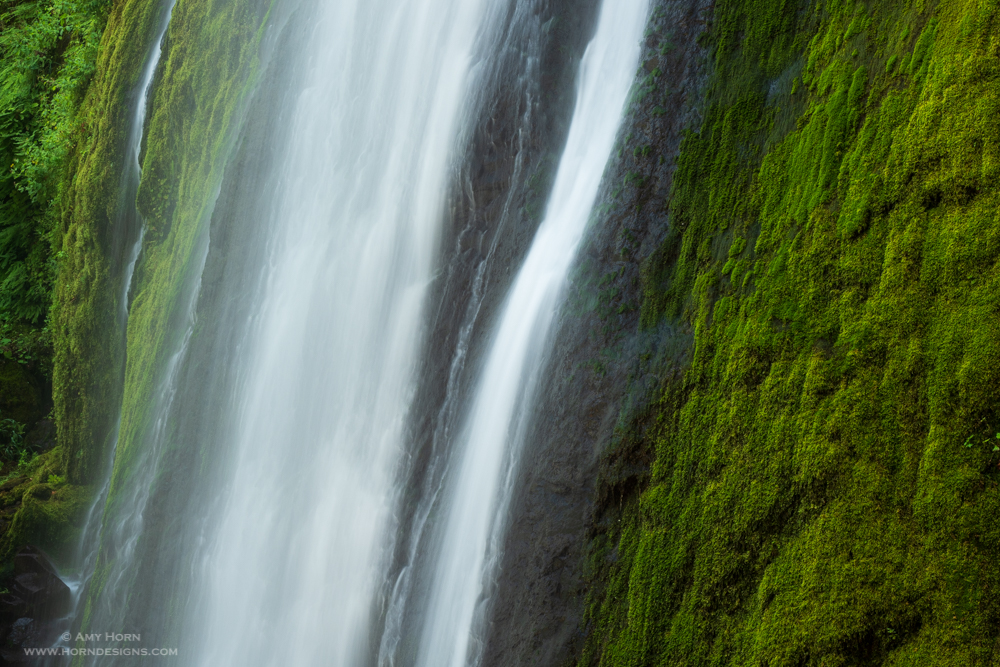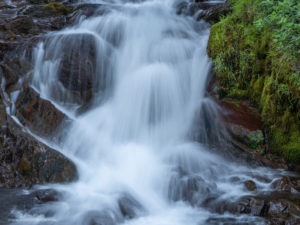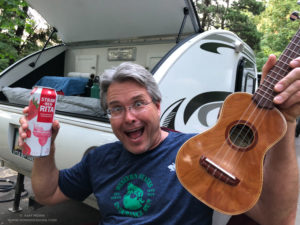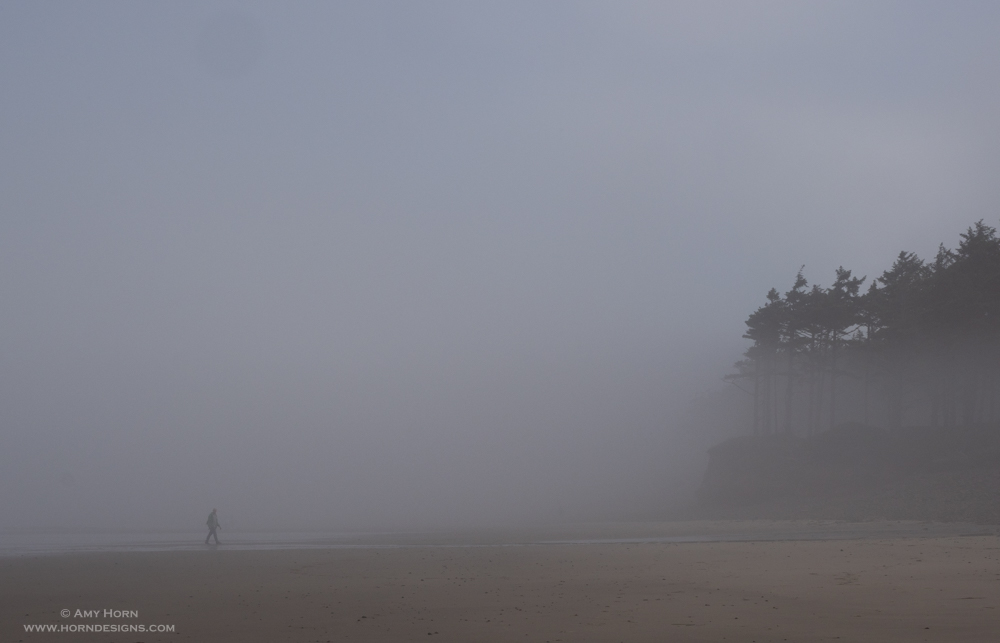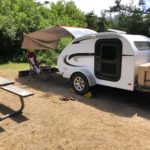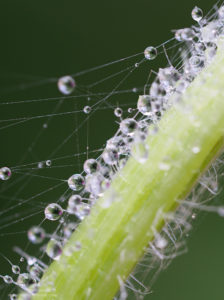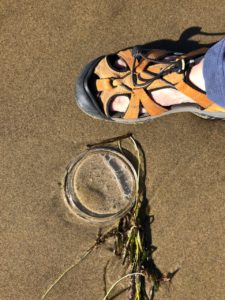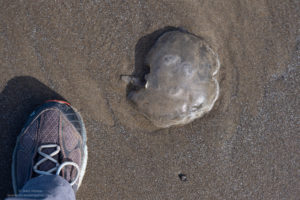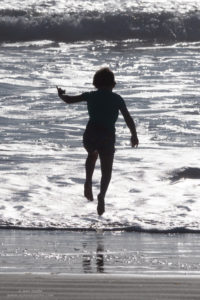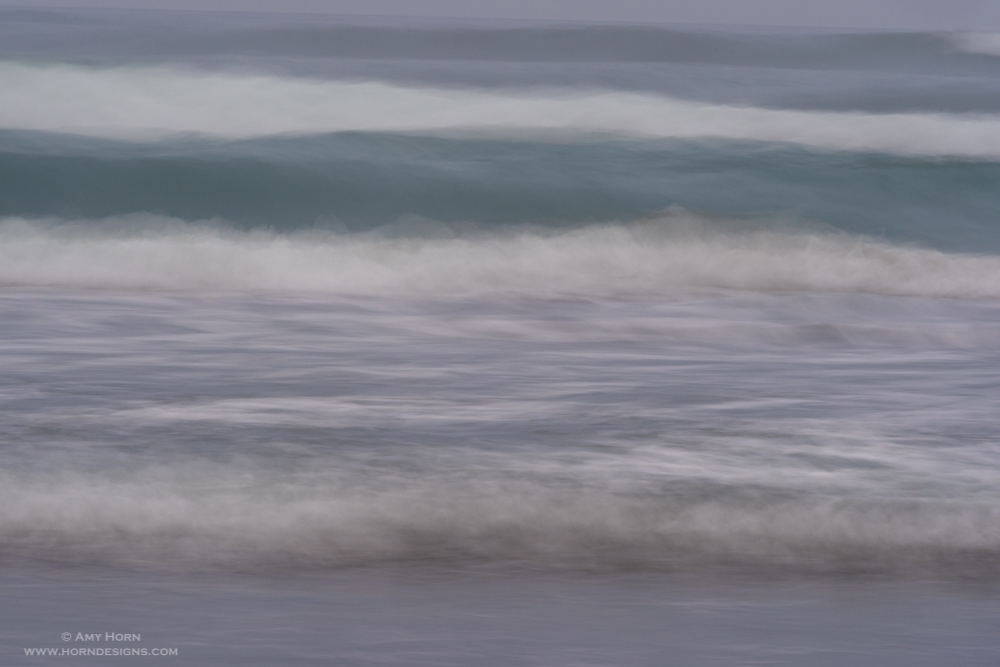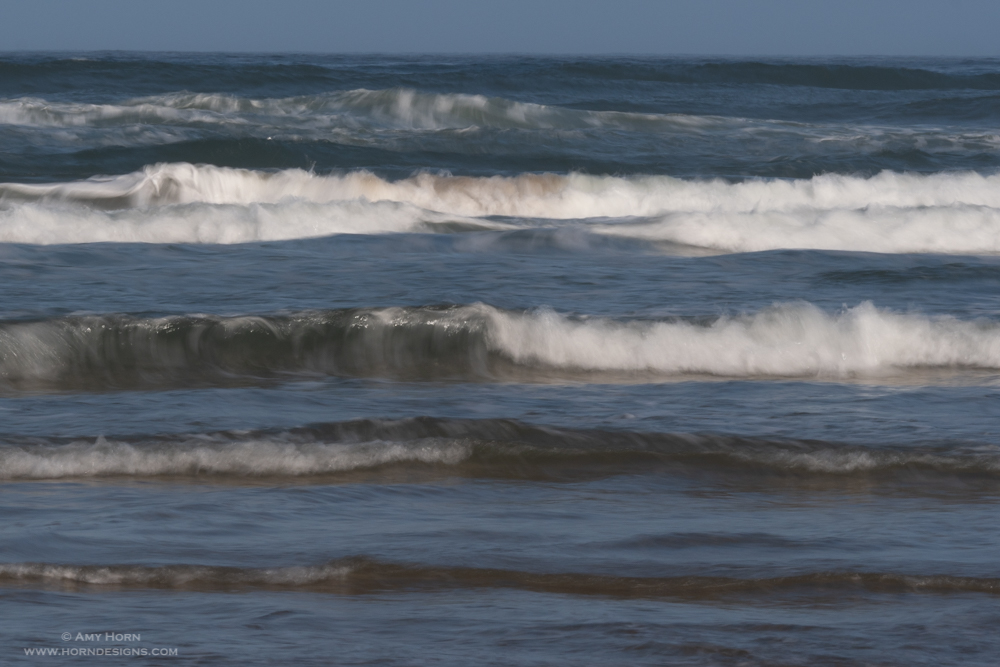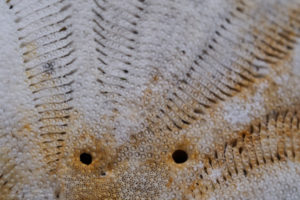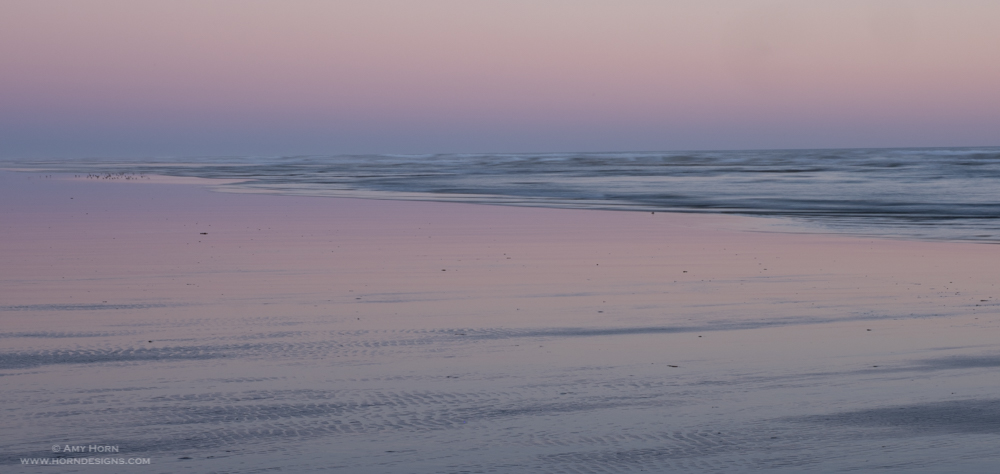
Cloudless Night. Olympus OM-D E-M1 Mark II, 12-100mm, ISO 200, f/20, .8 sec.
My tarp finally got rained on as I packed to leave Cape Disappointment. On the way to Ocean City, I drove through rain, fog and mist. It was beautiful. In Ocean City, there wasn’t a cloud in the sky and it was only 80 miles from Cape Disappointment. What a difference. After setting up camp, I sat in the sun and read for an hour just to soak up some rays. The Ocean City campground was two blocks from the ocean so I shot sunset for two nights here. The first night without clouds and the last night with excellent clouds.
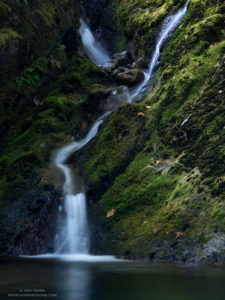
Fall Creek. Olympus OM-D E-M1 Mark II, 12-100mm, ISO 200, f/8, 6 sec., with Bryan Hansel Singh-ray Filter.
Ocean City is a short drive to Lake Quinault, part of the Olympic National Forest and there are many waterfalls. I was so excited to photograph there, I woke up very early and was on a trail by 7:30am after the 1-hour drive. My first location was Falls Creek which is on the edge of a tent campground and I was very quiet to not wake up any campers. It was a pretty fall, but I struggled getting a composition I liked. So, I hiked to Gatton Creek Falls. It was a mile to the falls and a bridge crossed over the top. The only problem with this tiered fall was access to it. I could not find a trail I was willing to walk down without going swimming so I headed back a little discouraged.
Even though I wanted to photograph waterfalls, I reminded myself how beautiful the trail was and tried to find other things to photograph. I came across chicken mushroom and moss growing on the side of a tree stump and pulled out the macro lens.
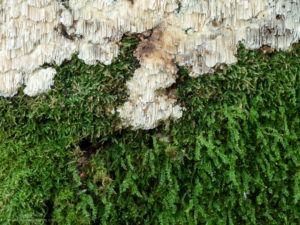
Chicken Mushroom and moss. Olympus OM-D E-M1 Mark II, 60 mm, ISO 200, f/9, 2.5 sec.
Mosquitos were buzzy around, but my deet must have worked as I survived without a bite. Capturing the macro shots reinforced my thoughts of the beautiful trail and improved my mood. I took off in search of more falls.
Waterfalls
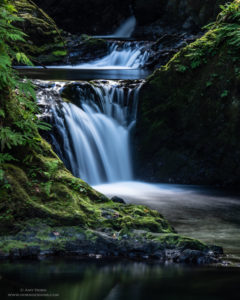
Willaby Creek Falls Final Photo. Olympus OM-D E-M1 Mark II, 12-100mm, ISO 200, f/8, 5 sec., with Bryan Hansel Singh-ray Filter.
The trail to Willaby Falls was non-technical and I didn’t feel that I was going to fall in. I stepped off the trail slightly to get a better angle and had fun capturing images here. In the photog section below, I discuss the first photo upon arriving at the scene to my final photo. When I am photographing beautiful falls like this, I try to remind myself to look not only through the camera but with my eyes as well. So, often I will pause and just admire without looking for a composition or changing an aperture. I just take in the beauty.
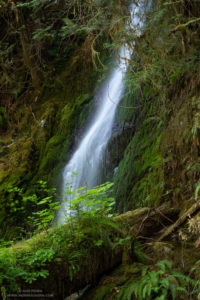
Merriman Falls Olympus OM-D E-M1 Mark II, 12-100mm, ISO 200, f/10, 8 sec., with Bryan Hansel Singh-ray Filter.
Lastly, I drove to Merriman Falls. The 40-foot drop contrasted with Willaby Creek Falls and required a different approach to capture an image. Next to the side of the road with only a pullout (no sign) this waterfall was magnificent. The entire falls were hard to photograph because by this time, other people were around. Another photog was there capturing couple’s photos as well, so I worked around them and captured small scenes of the falls.
Comforts of Home
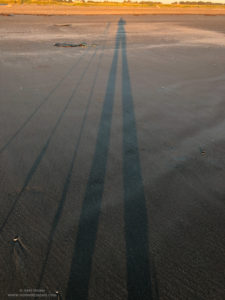
I’m waving hello! iPhone photo.
I watched Neflix! This campground had free wifi and I enjoyed it thoroughly: backed up photos, caught up on email and watched a few movies on Netflix. This was my first TV for almost 6 weeks. After six weeks, my car and trailer are dirty. Even though I was rained on, the dirt roads and sea spray have done a number on my car. It still surprised me when a total stranger said, “That is a dirty car,” to me at the gas station. Peer pressure worked and I drove through a self-serve car wash 15 minutes later. Of course, the sea spray hit again that night shooting sunset. After 4500 miles, what do you expect?
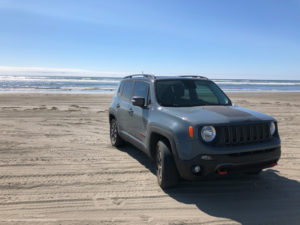
Car on beach, iPhone photo.
Oregon’s beaches are public property and the state owns them. In Washington, it seems similar and they let you drive on the beach! So, I had get my Renegade on the sand. When I sent the photo home to Rod he was concerned that I would get stuck. But, I didn’t.
I spent an afternoon in Ocean Shores a few miles away and walked several miles along Damon Point. Damon Point has spectacular crashing waves, agates, shells and driftwood. I even found a marble that I’m taking home for our cats. I grabbed fried oysters in town to complete my west coast seafood checklist and headed back to camp to prepare for sunset.
-
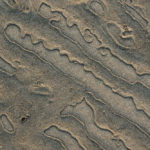
-
Patterns in the Sand. Olympus OM-D E-M1 Mark II, 12-100mm, ISO 200, f/5.6, 1/30 sec., in-camera focus stacked.
-
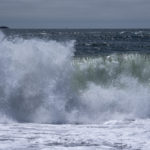
-
Crashing waves. Olympus OM-D E-M1 Mark II, 12-100mm, ISO 200, f/5.6, 1/6400 sec.
For the Photogs!
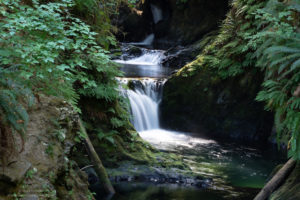
Willaby Creek Falls First Photo. Olympus OM-D E-M1 Mark II, 12-100mm, ISO 200, f/10, .8 sec.
When I photograph waterfalls, I like to start with a sample image once I am setup. I often use aperture priority mode and take a sample shot to help me view the scene. Once I take a shot, I am more successful on composing by analyzing if that is the story I want to capture. I say to myself, “what can I do to make this better.” With the image on the right, there is a lot to do to make it better. At first, I shot from the trail with the tripod above a bush. Then I noticed a dirt path off the trail and I examined what would be the best location to capture the photo. If your tripod isn’t as tall as you, make sure you view the scene the same as your camera. I often pull out my iPhone to “view” the scene at different heights to determine where to setup the tripod. Once I was away from the bush, I put on my Bryan Hansel filter from Singh-ray. Yes, I love this filter! I played with horizontal and vertical orientations until I found just the right composition. I knew before I captured the photo I would crop a small portion from the foreground because there was a distracting reflection that I could not avoid otherwise. View the final Willaby Creek Falls photo above in this post.
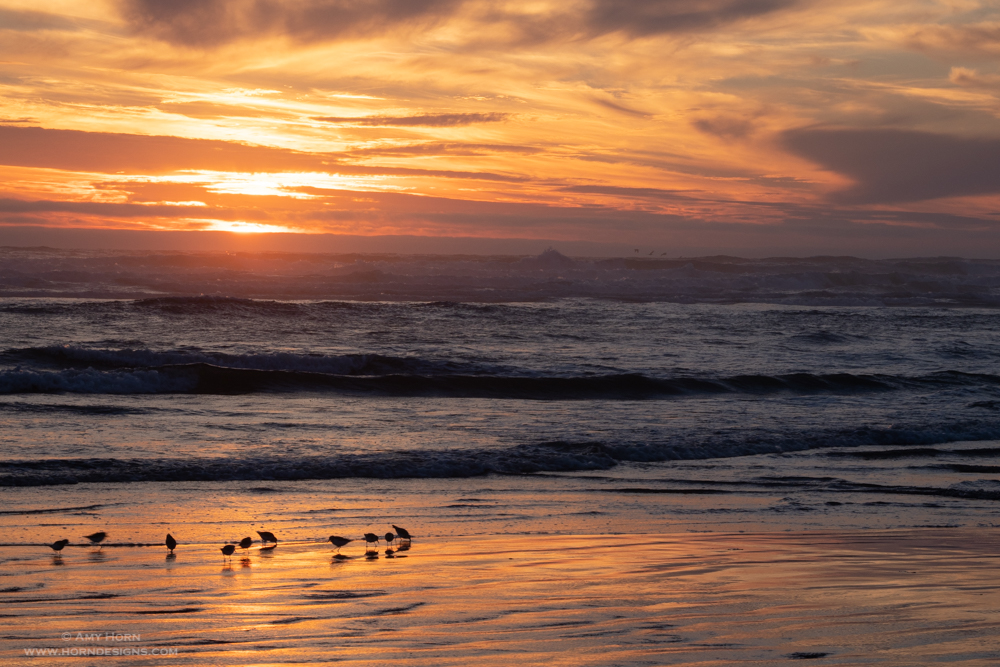
Ocean City Beach. Olympus OM-D E-M1 Mark II, 12-100mm, ISO 200, f/10, 1/80 sec.
